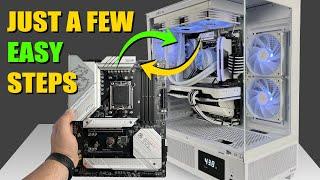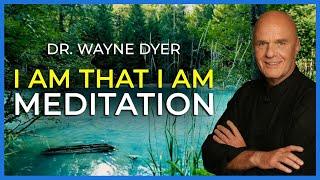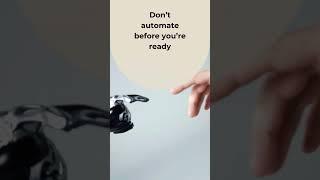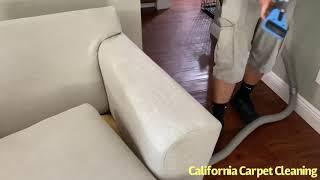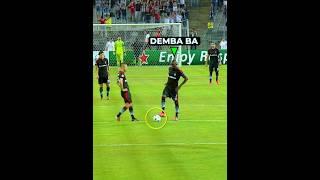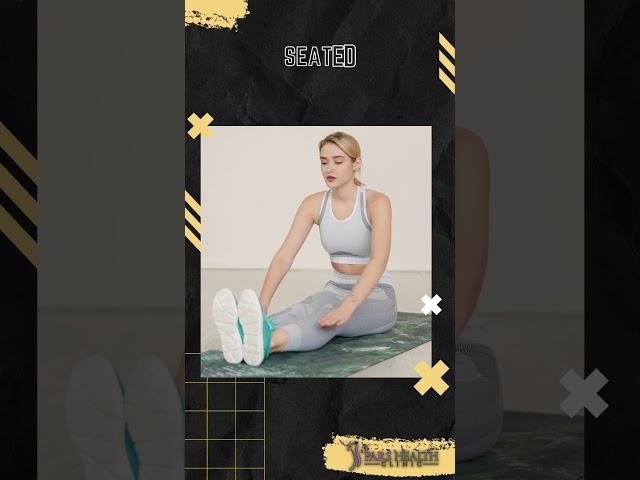
Unlock Your Freedom From Low Back Pain in 3 Simple Steps!
Tired of Low Back Pain? This Hip Mobility Trick Could Help!
To see daily videos about body health ✅SUBSCRIBE✅ to our channel:
https://www.youtube.com/c/ParsHealthTV?sub_confirmation=1
Use this link to watch the full version of this video: https://youtu.be/3q39-r7iCeg
We'll be talking about these items in this video:
LOW BACK PAIN AND HIP MOBILITY:
- Hip Flexor Stretch
- Pigeon Pose
- Seated Forward Fold
We will answer these questions in the long version of this title:
- How to fix low back pain?
- What are the best low back pain exercises?
- How to fix hip pain?
- How to stop low back pain?
- What are the reasons for low back pain?
- How to stop hip pain?
- How to stop back pain?
- How to fix back pain?
- What are the best back pain exercises?
7- Hip Flexor Stretch
Kneel on one knee with the other foot in front, creating a lunge position. Gently push the hips forward while keeping the back straight. You should feel a stretch in the front of the hip of the back leg. Hold for 30 seconds on each side.
6- Pigeon Pose
Begin in a push-up position and bring one knee forward, placing it behind the same-side wrist. Extend the other leg straight back, keeping the hips square. Slowly lower the upper body down toward the floor, feeling a stretch in the hip of the extended leg. Hold for 30 seconds on each side.
5- Seated Forward Fold
Sit on the floor with both legs extended in front of you. Lean forward from the hips, reaching toward your feet. If possible, grab onto your feet or ankles. Focus on maintaining a flat back and feeling the stretch in the back of the hips and hamstrings. Hold for 30 seconds.
4- Figure 4 Stretch
Lie on your back with both knees bent and feet flat on the floor. Cross one ankle over the opposite knee, creating a figure 4 shape. Gently pull the uncrossed leg towards the chest until you feel a stretch in the hip of the crossed leg. Hold for 30 seconds on each side.
Don't forget to hit that subscribe button and turn on the notification bell, so you never miss out on our future videos. Alright, enough chit-chat, let's get started on this journey to a pain-free back and supple hips!
3- Lizard Pose
Start in a high plank position, then step one foot forward outside of the same-side hand. Lower the back knee to the ground and sink your hips down towards the floor, feeling a stretch in the hip flexor of the back leg. Hold for 30 seconds on each side.
2- Frog Stretch
Begin on all fours with your knees wider than hip-width apart. Slowly move your hips back, allowing your body to lower towards the floor while keeping the knees bent and in line with the hips. You should feel a stretch in the inner thighs and hips. Hold for 30 seconds.
1- 90/90 Stretch
Sit on the floor with one leg bent in front of you at a 90-degree angle and the other leg bent behind you at a 90-degree angle. Lean forward, keeping the back straight, and feel the stretch in the hips. Hold for 30 seconds on each side.
Other tips about low back pain
Remember, it's essential to perform these stretches gently and gradually, without pushing beyond your comfort zone. Consistency is key, so aim to incorporate these stretches into your routine a few times per week to improve hip mobility over time.
Low back pain is a prevalent condition that affects a significant number of individuals worldwide. One factor that can contribute to low back pain is limited hip mobility. The hip joint plays a crucial role in providing stability, balance, and movement to the lower body. When the hip joint lacks proper mobility, it can lead to compensatory movements and increased stress on the lower back, resulting in pain and discomfort. Understanding the relationship between low back pain and hip mobility is essential for effective management and prevention of this common musculoskeletal issue.
Hip mobility refers to the ability of the hip joint to move freely through its full range of motion. Optimal hip mobility involves adequate flexion, extension, abduction, adduction, internal rotation, and external rotation. When there are restrictions or limitations in any of these movements, the body compensates by placing excessive strain on other structures, such as the lumbar spine.
One of the primary mechanisms linking low back pain and hip mobility is the concept of the kinetic chain. The body functions as an interconnected system, where movement at one joint influences the movement and function of adjacent joints. Limited hip mobility can disrupt the kinetic chain, altering movement patterns and causing compensations in other areas, such as the lumbar spine.
For example, if the hip lacks sufficient flexion, the body may compensate by increasing lumbar spine flexion during activities such as bending forward or lifting.
#parshealthtv #parshealthclinic #pars_health_tv #pars_health_clinic #backpain #lowbackpain #low_back_pain #hip_pain #low_back_pain_exercises
To see daily videos about body health ✅SUBSCRIBE✅ to our channel:
https://www.youtube.com/c/ParsHealthTV?sub_confirmation=1
Use this link to watch the full version of this video: https://youtu.be/3q39-r7iCeg
We'll be talking about these items in this video:
LOW BACK PAIN AND HIP MOBILITY:
- Hip Flexor Stretch
- Pigeon Pose
- Seated Forward Fold
We will answer these questions in the long version of this title:
- How to fix low back pain?
- What are the best low back pain exercises?
- How to fix hip pain?
- How to stop low back pain?
- What are the reasons for low back pain?
- How to stop hip pain?
- How to stop back pain?
- How to fix back pain?
- What are the best back pain exercises?
7- Hip Flexor Stretch
Kneel on one knee with the other foot in front, creating a lunge position. Gently push the hips forward while keeping the back straight. You should feel a stretch in the front of the hip of the back leg. Hold for 30 seconds on each side.
6- Pigeon Pose
Begin in a push-up position and bring one knee forward, placing it behind the same-side wrist. Extend the other leg straight back, keeping the hips square. Slowly lower the upper body down toward the floor, feeling a stretch in the hip of the extended leg. Hold for 30 seconds on each side.
5- Seated Forward Fold
Sit on the floor with both legs extended in front of you. Lean forward from the hips, reaching toward your feet. If possible, grab onto your feet or ankles. Focus on maintaining a flat back and feeling the stretch in the back of the hips and hamstrings. Hold for 30 seconds.
4- Figure 4 Stretch
Lie on your back with both knees bent and feet flat on the floor. Cross one ankle over the opposite knee, creating a figure 4 shape. Gently pull the uncrossed leg towards the chest until you feel a stretch in the hip of the crossed leg. Hold for 30 seconds on each side.
Don't forget to hit that subscribe button and turn on the notification bell, so you never miss out on our future videos. Alright, enough chit-chat, let's get started on this journey to a pain-free back and supple hips!
3- Lizard Pose
Start in a high plank position, then step one foot forward outside of the same-side hand. Lower the back knee to the ground and sink your hips down towards the floor, feeling a stretch in the hip flexor of the back leg. Hold for 30 seconds on each side.
2- Frog Stretch
Begin on all fours with your knees wider than hip-width apart. Slowly move your hips back, allowing your body to lower towards the floor while keeping the knees bent and in line with the hips. You should feel a stretch in the inner thighs and hips. Hold for 30 seconds.
1- 90/90 Stretch
Sit on the floor with one leg bent in front of you at a 90-degree angle and the other leg bent behind you at a 90-degree angle. Lean forward, keeping the back straight, and feel the stretch in the hips. Hold for 30 seconds on each side.
Other tips about low back pain
Remember, it's essential to perform these stretches gently and gradually, without pushing beyond your comfort zone. Consistency is key, so aim to incorporate these stretches into your routine a few times per week to improve hip mobility over time.
Low back pain is a prevalent condition that affects a significant number of individuals worldwide. One factor that can contribute to low back pain is limited hip mobility. The hip joint plays a crucial role in providing stability, balance, and movement to the lower body. When the hip joint lacks proper mobility, it can lead to compensatory movements and increased stress on the lower back, resulting in pain and discomfort. Understanding the relationship between low back pain and hip mobility is essential for effective management and prevention of this common musculoskeletal issue.
Hip mobility refers to the ability of the hip joint to move freely through its full range of motion. Optimal hip mobility involves adequate flexion, extension, abduction, adduction, internal rotation, and external rotation. When there are restrictions or limitations in any of these movements, the body compensates by placing excessive strain on other structures, such as the lumbar spine.
One of the primary mechanisms linking low back pain and hip mobility is the concept of the kinetic chain. The body functions as an interconnected system, where movement at one joint influences the movement and function of adjacent joints. Limited hip mobility can disrupt the kinetic chain, altering movement patterns and causing compensations in other areas, such as the lumbar spine.
For example, if the hip lacks sufficient flexion, the body may compensate by increasing lumbar spine flexion during activities such as bending forward or lifting.
#parshealthtv #parshealthclinic #pars_health_tv #pars_health_clinic #backpain #lowbackpain #low_back_pain #hip_pain #low_back_pain_exercises
Тэги:
#Pars_Health_TV #pars_health_tv #parshealthtv #parshealthclinic #pars_health_clinic #short_videos #low_back_pain_and_hip_mobility #low_back_pain #back_pain #lower_back_pain #low_back_pain_exercises #hip_pain #how_to_fix_low_back_pain #stretching #lower_back_pain_exercises #spinecare #stretches_for_hip_pain #back_pain_stretches #low_back_pain_stretches #lower_back_workout #lower_back_pain_relief #back_pain_relief #how_to_fix_lower_back_pain #hip_mobility_exercises #pain #back #hipКомментарии:
Unlock Your Freedom From Low Back Pain in 3 Simple Steps!
Pars Health TV
How to Swap your PC Motherboard
Builds With V
Bizarre Чаепитие
Роман Донской
Why automation feels complicated? #businessautomation
Roxana Lafuente
Sustainable Farming Explainer Video Sustainable Agriculture
Dynamic Earth Learning
Steam Cleaning A White Couch
California Carpet Cleaning
Squid Game 2 Premiere, Seoul Korea | Vlog 86
Dhruv & Shyam
IndiaSoft 2023 - A Journey With Many Memories | Protonshub Technologies
Protonshub Technologies

